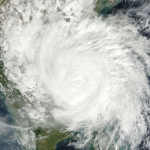Blog Details
3 Rules of Thumb for Understanding Condo Insurance.
Whether it is a house or a condo, investing in an insurance policy can help mitigate any financial burdens resulting from potential accidents down the road. However, homeowner’s insurance and condo insurance policies work differently as they are different structures requiring different levels and types of coverage.
Condos have shared communal spaces, such as lawns to recreational areas, whereas houses are typically stand-alone structures. Because there are shared spaces, condo owners can benefit from sharing some insurance costs with their condo association--the keyword being “some.” Just because your condo association provides some insurance coverage does not necessarily mean that it is comprehensive. You will very likely still need to purchase a separate condo insurance policy to be sure all of your bases are covered in the event of an accident.Basics of Understanding Condo Insurance
Condo insurance can often be referred to as an HO-6, studs-in, or a walls-in policy which is essentially property insurance for the condo and owner of a specific unit. This type of insurance differs from condo association insurance because it covers the personal belongings, liability, improvements, or alterations specific to the inside of the individual condo unit.
3 Rules of Thumb About Condo Insurance
Like homeowner’s insurance, condo insurance policies can vary based on many factors. However, there are a few general rules of thumb to know about acquiring condo insurance.#1: Master Policies
Your condominium will typically have a condo insurance association policy already in place. Some may be extremely comprehensive, while others are very basic.. Here are three common master policies that your association may have: ● All-in and all-inclusive coverage helps cover your unit’s interior surfaces, fixtures, additions, installations, etc. ● Special entity coverage helps cover nearly every part of the condo’s structures including fixtures in individual units, while excluding structural improvements. ● Bare walls-in coverage helps cover the condo’s interior fixtures, countertops, and personal property.#2: General Losses Condo Insurance
Nearly every condo insurance policy covers a few basic losses, including fire, weather, theft, vandalism, smoke damage, and frozen pipes. But it will likely exclude break-ins, water damages, or liability. You may want to consider purchasing a separate policy that does cover you for those accidents, and speaking with an insurance agent can help you determine the best coverage options for you and your budget.#3: Loss-Assessment Insurance
Depending on the condo association’s coverage, damages or losses may exceed the group or policy coverage. This is when having loss assessment insurance can provide you with an added layer of protection. This type of coverage can provide protection for things like injuries sustained at the community pool, for example.Get the Best Condo Insurance for Your Needs
Finding the best condo insurance for your needs and within your budget can be complex, from understanding the condo association’s existing policy and coverage to evaluating your additional coverage needs. At GWK Insurance, we make it a priority to educate, inform, and assist our clients throughout the entire insurance selection process. Contact us today to learn how we can help you find the best insurance policy for you and your wallet.
Posted in:











Let’s Get in Touch
Your email address will not be published. Required fields are marked *